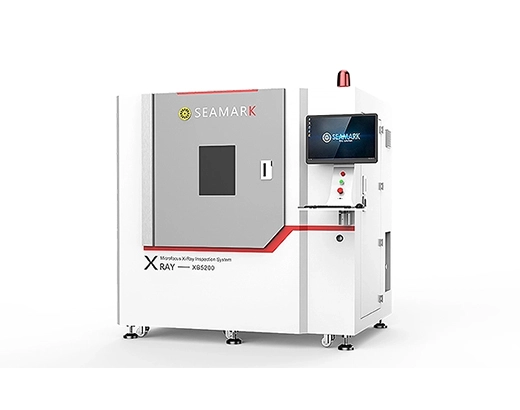
Electronics x-ray machines have revolutionized the field of diagnostics and imaging. With the ability to penetrate objects and generate detailed images of internal structures, these machines have become an indispensable tool in various industries. In this blog, we will explore the components and features of electronics x-ray machines, with a focus on Seamark, a renowned brand in this field.
The x-ray generator is the heart of an electronics x-ray machine. It is responsible for producing x-rays by converting electrical energy into high-frequency electromagnetic radiation. The generator operates using high-voltage power supplies, specifically designed for x-ray applications. Seamark x-ray machines are equipped with advanced generators that ensure the production of high-quality and accurate x-ray images.
The x-ray tube is a crucial component that converts the electrons emitted by the generator into x-rays. It consists of a cathode and an anode, which are separated by a vacuum. When high-speed electrons from the cathode collide with the anode, x-rays are generated. Seamark x-ray machines utilize high-performance x-ray tubes to ensure optimal image quality and minimize radiation exposure to patients.
| Component | Function | Subcomponents |
|---|---|---|
| Cathode | Responsible for emitting electrons when heated. | Filament: Made of tungsten, emits electrons through thermionic emission when heated |
| Anode | Attracts the electrons emitted by the cathode. When these high-speed electrons collide with the anode, X-rays are produced. | Target: Typically made of tungsten, the site where electrons collide to produce X-rays. |
| Glass or Metal Envelope | Encases the cathode and anode in a vacuum, essential for the free movement of electrons from the cathode to the anode without air resistance. | Vacuum: Maintained within the envelope to ensure efficient electron travel and prevent oxidation of the filament. |
| Tube Housing | Provides structural support and shielding to protect users from stray X-rays and electrical hazards. | Lead Shielding: Surrounds the tube to absorb scattered X-rays and protect the operator. |
| High-Voltage Power Supply | Provides the necessary high voltage (typically between 30 kV and 150 kV) to accelerate the electrons from the cathode to the anode. | Transformer: Steps up the voltage from the power supply to the required high voltage |
Modern electronics x-ray machines are equipped with digital imaging systems, which have replaced traditional film-based systems. These systems capture the x-ray images and convert them into digital signals, which can be processed and displayed on computer screens. Seamark x-ray machines feature advanced digital imaging technology, allowing for immediate image acquisition, enhanced visualization, and easy storage and retrieval of patient data.
To analyze and enhance the captured x-ray images, electronics x-ray machines rely on image processing software. Seamark x-ray machines incorporate sophisticated software that enables radiologists to manipulate and optimize the images. This software offers various tools such as zooming, adjusting brightness and contrast, measuring distances, and highlighting specific areas of interest. It assists radiologists in accurate diagnosis and enables seamless integration with electronic medical record systems.
The detectors used in electronics x-ray machines are responsible for capturing the x-ray radiation and producing digital signals. Seamark x-ray machines utilize high-resolution detectors that ensure precise image details, resulting in superior diagnostic accuracy. These detectors are designed to minimize noise and maximize sensitivity, providing clear and high-quality images for accurate interpretation.
To ensure the safety of both patients and operators, electronics x-ray machines are equipped with various safety features. Seamark x-ray machines employ radiation shields and collimators to confine the x-ray beam to the desired area, minimizing unnecessary exposure. Additionally, automated exposure control systems regulate the exposure parameters according to the patient's size and body part being scanned, reducing radiation doses without compromising image quality.
Electronics x-ray machines, such as those offered by Seamark, play a vital role in medical diagnostics, industrial testing, and security screening. The components and features discussed above are essential for delivering accurate and high-quality images while ensuring the safety of patients and technicians. Seamark's commitment to advanced technology and innovation has positioned them as a trusted brand in the electronics x-ray machine industry. So when it comes to the needs of your diagnostic imaging, Seamark electronics x-ray machines are definitely worth considering.
 EN
EN
 es
es  ko
ko  de
de  it
it  ru
ru  pt
pt  ar
ar  vi
vi  th
th  pl
pl 
